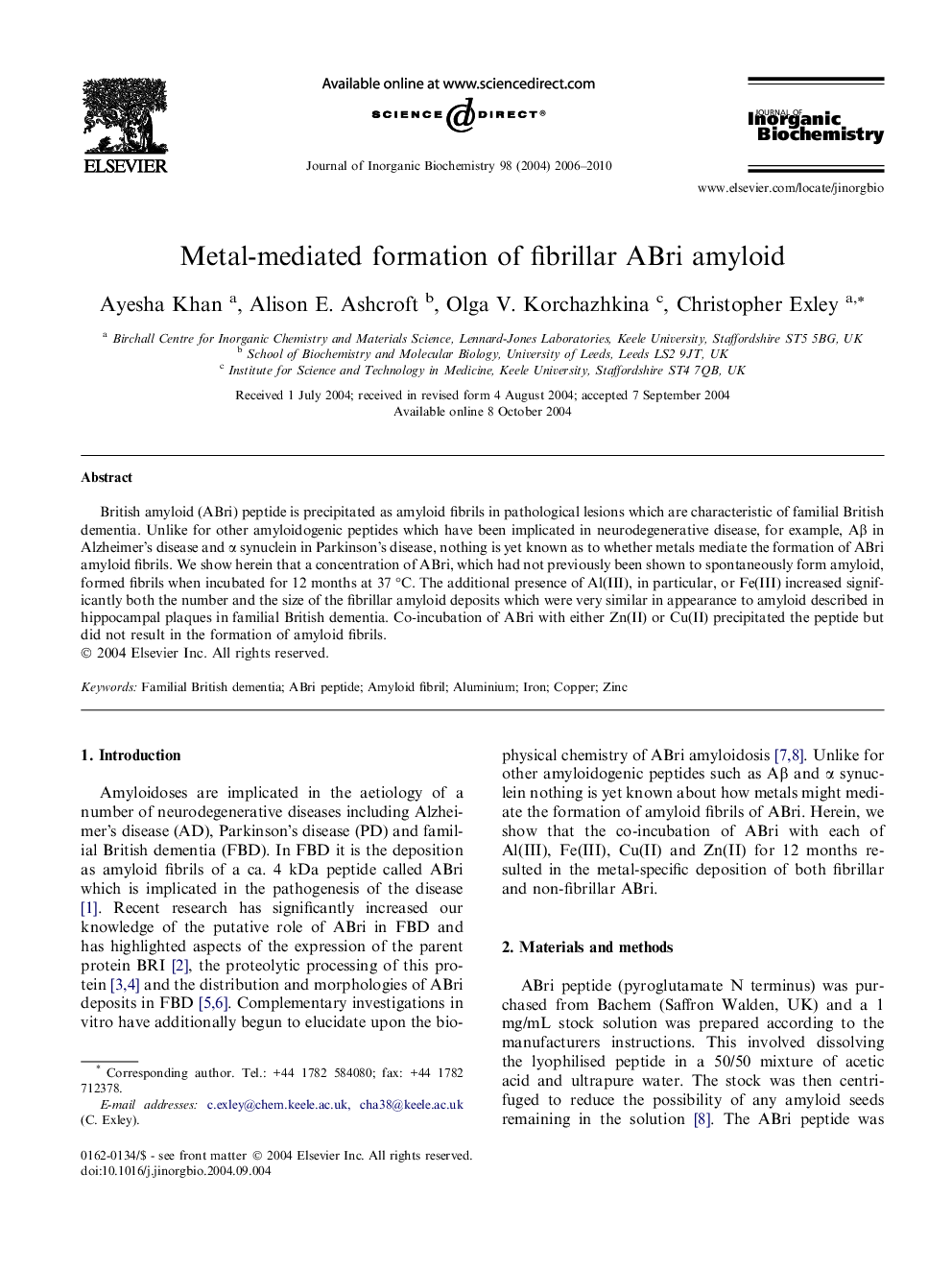| کد مقاله | کد نشریه | سال انتشار | مقاله انگلیسی | نسخه تمام متن |
|---|---|---|---|---|
| 1318215 | 976685 | 2010 | 5 صفحه PDF | دانلود رایگان |

British amyloid (ABri) peptide is precipitated as amyloid fibrils in pathological lesions which are characteristic of familial British dementia. Unlike for other amyloidogenic peptides which have been implicated in neurodegenerative disease, for example, Aβ in Alzheimer’s disease and α synuclein in Parkinson’s disease, nothing is yet known as to whether metals mediate the formation of ABri amyloid fibrils. We show herein that a concentration of ABri, which had not previously been shown to spontaneously form amyloid, formed fibrils when incubated for 12 months at 37 °C. The additional presence of Al(III), in particular, or Fe(III) increased significantly both the number and the size of the fibrillar amyloid deposits which were very similar in appearance to amyloid described in hippocampal plaques in familial British dementia. Co-incubation of ABri with either Zn(II) or Cu(II) precipitated the peptide but did not result in the formation of amyloid fibrils.
Journal: Journal of Inorganic Biochemistry - Volume 98, Issue 12, December 2004, Pages 2006–2010